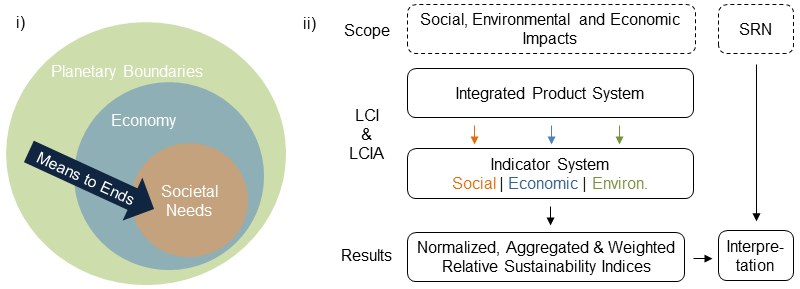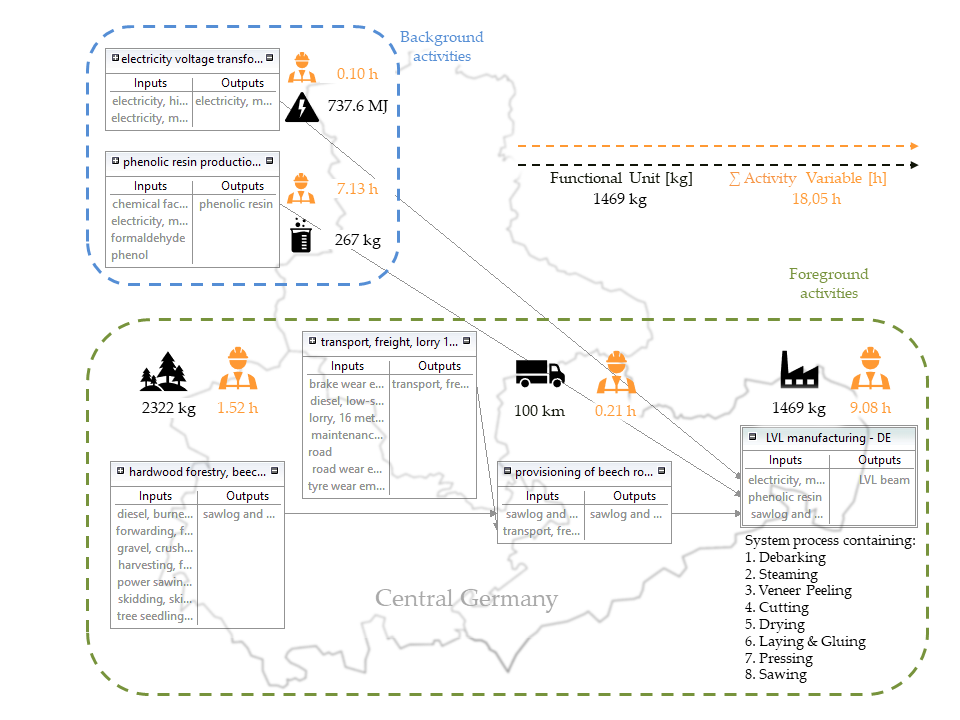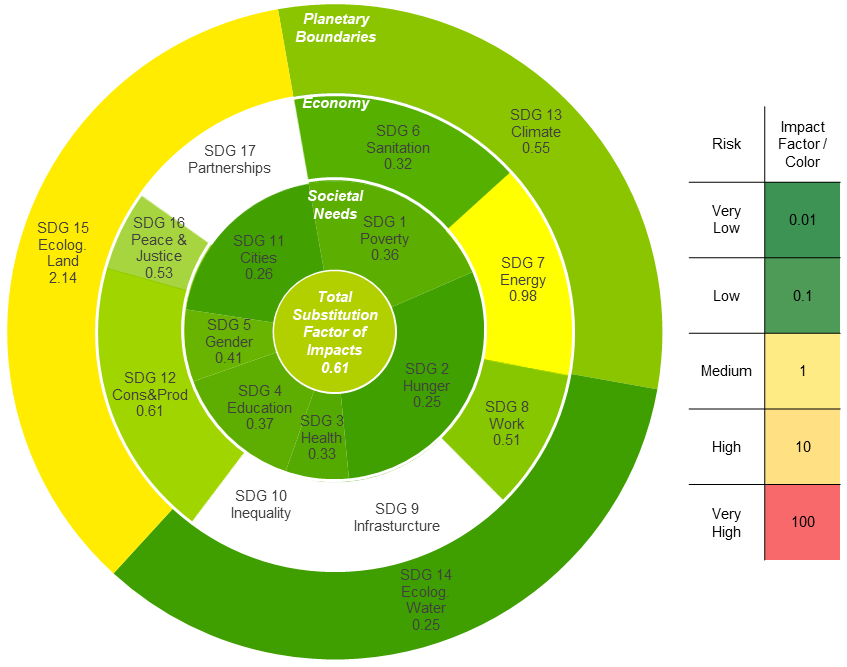Holistic and Integrated Life Cycle Sustainability Assessment (HILCSA)
Contact persons: Dr.-Ing. Walther Zeug
Measuring and evaluating ecological, economic, and social sustainability across all stages of a product's, process’s, or service’s life cycle is at the core of established Life Cycle Assessment (LCA) methodologies. These approaches are increasingly combined into Life Cycle Sustainability Assessment (LCSA) frameworks. HILCSA—Holistic and Integrated Life Cycle Sustainability Assessment—is an innovative method within this field, enabling a comprehensive, ISO 14040/14044-compliant and integrated evaluation of holistic sustainability.
A Societal Perspective on Sustainability
HILCSA builds on the Theory of Societal Relations to Nature (SRN), which views economic systems as comprising both physical and social components. These systems of societal metabolisms mediate the transformation of natural resources into goods and services for societal needs through infrastructures and economic practices. Based on this understanding, HILCSA defines sustainability as:- Social sustainability: Long-term, global fulfillment of societal needs and well-being
- Ecological sustainability: Long-term environmental stability as the foundation for societal reproduction, within planetary boundaries (PB)
- Economic sustainability: Efficient, effective, sufficient, and just technological and economic systems that support sustainable needs fulfillment within PB

A Holistic and Integrative Method
HILCSA integrates ecological, economic, and social dimensions into a single assessment framework. It uses approximately 100 qualitative and quantitative indicators across all three sustainability dimensions and addresses 14 of the 17 UN Sustainable Development Goals (SDGs). The method provides a transdisciplinary and critical analysis of sustainability trade-offs, synergies, and hotspots in production and consumption systems—particularly within the bioeconomy but also beyond.HILCSA models processes, products, organizations, and regions as integrated systems, incorporating material and energy flows, as well as working time. It is fully implemented in free the openLCA software, using data from the Ecoinvent and SoCa databases.

Case Studies and Applications
To date, HILCSA has been applied in several case studies within the bioeconomy. The method enables relative sustainability assessments, comparing innovative production systems to fossil-based systems or alternative resource use pathways. Results—both qualitative and quantitative—are embedded in a broader transdisciplinary analysis of political economy and political ecology, incorporating stakeholder participation.
Key findings from two case studies demonstrate:- Sustainability effects are closely interlinked, creating complex synergies and trade-offs
- Without structural changes, relying on biomass imports can perpetuate global inequalities and externalities
- Material use of biomass in the construction sector often outperforms non-renewables in terms of most SDGs
- The energetic use of biomass, such as for biofuels, involves complex sustainability risks: while reducing greenhouse gases, it can lead to ecological, social, and economic drawbacks if not carefully managed

Decision Support for Policy and Practice
By identifying detailed and aggregated synergies, trade-offs, and critical hotspots, HILCSA reveals common systemic issues in the bioeconomy—such as planetary limits on land and water availability and persistent socio-economic inequalities in global supply chains.Ultimately, the HILCSA framework connects sustainability assessment with normative societal and political questions. It offers valuable, science-based decision support for policymakers, researchers, organizations, and civil society.
Licensing and use of HILCSA
The HILCSA method is available free of charge for non-commercial use. Interested parties can obtain a license upon request by contacting the authors and signing a license agreement. For commercial use, please reach out to us directly—we welcome your inquiries and look forward to collaboration.
The prerequisite for this is the use of openLCA and the SoCa database.
Holistic and Integrated Life Cycle Sustainability Assessment (HILCSA) by Walther Zeug is licensed under CC BY-NC-SA 4.0
Method Update HILCSAv2.1
In recently ongoing research projects with HILCSA we identified two methodological problems of the HILCSAv2 aggregation method related to using the weighted arithmetic mean leading to undesired properties. For this reason, we revised HILCSA and introduced in February 2024 an updated HILCSAv2.1 which solves the issues and will be used in future applictions.
Publications:
Backgrounds of the method:
General framework:
Case studies:
Projects:
KEK Monitoring − Status monitoring of the climate and energy concept of the state of Saxony-Anhalt
